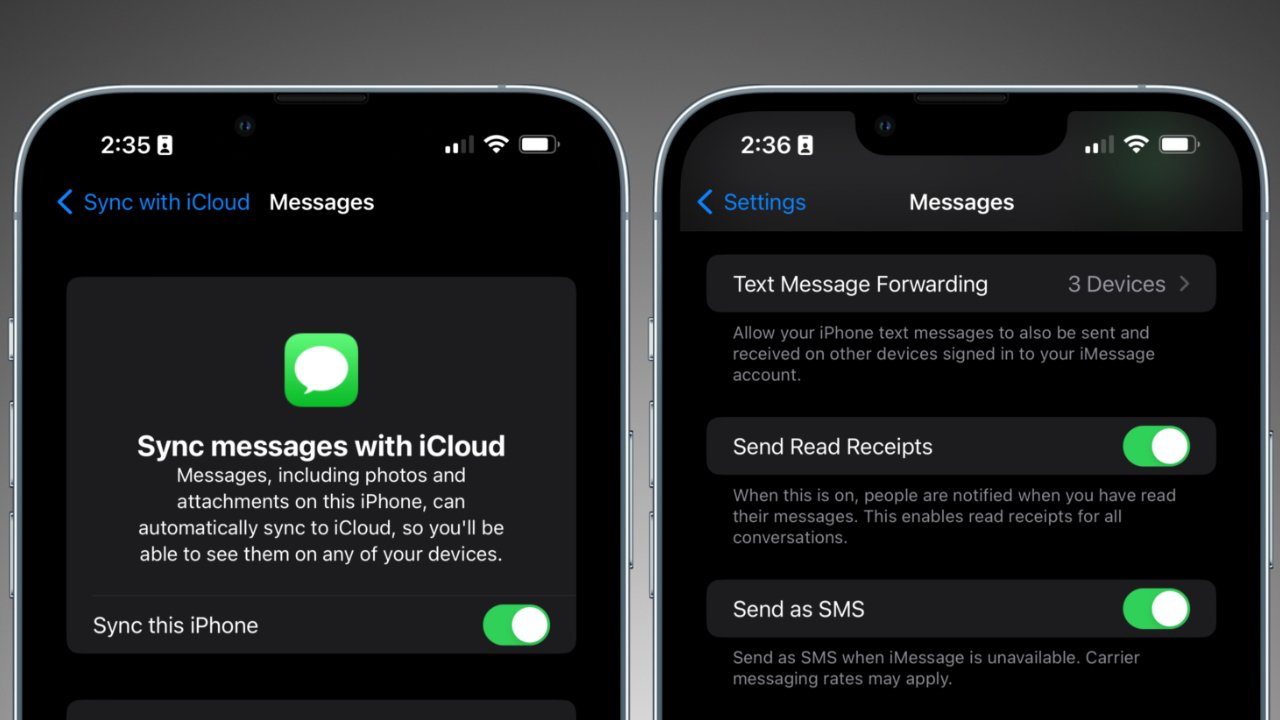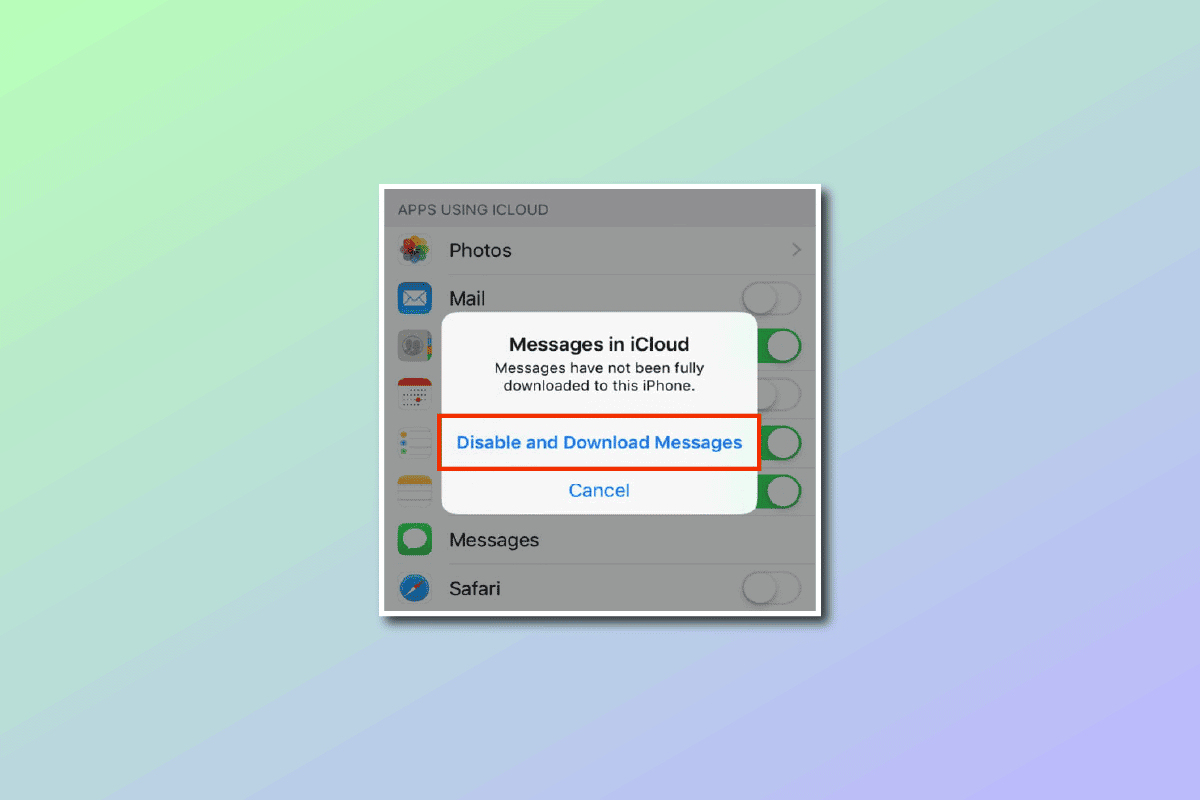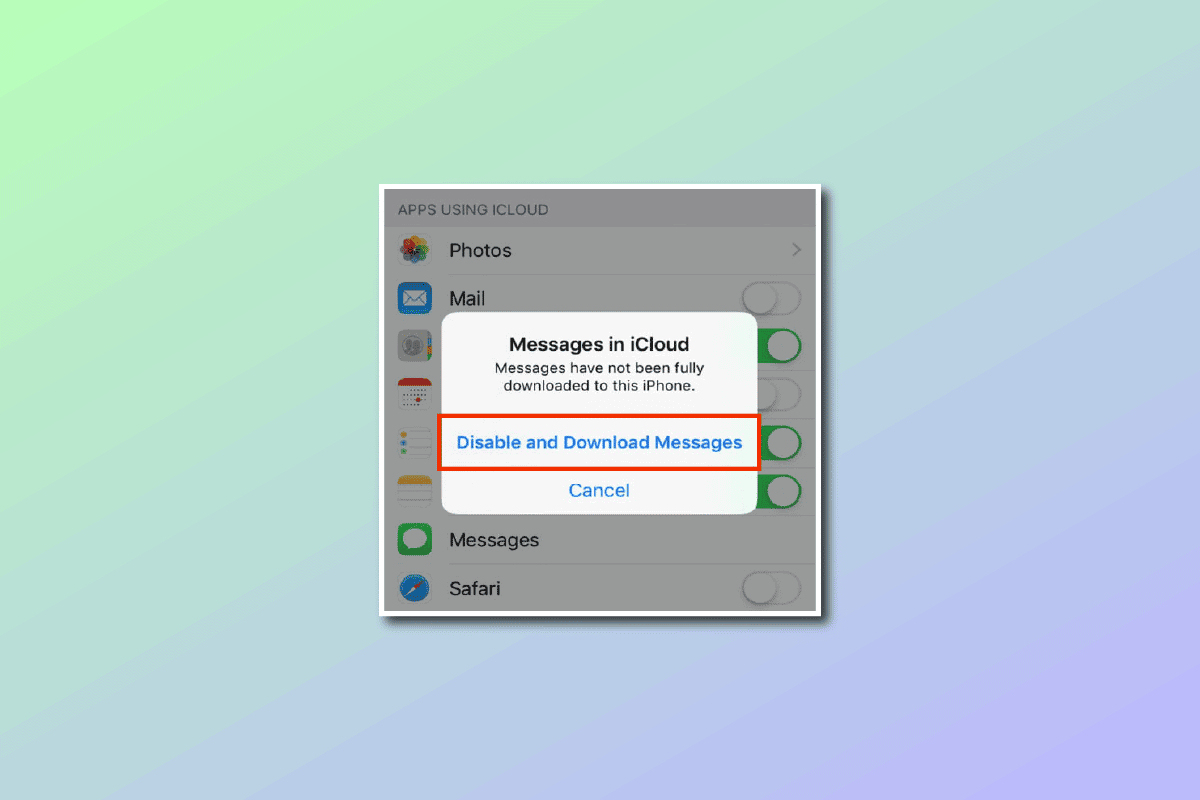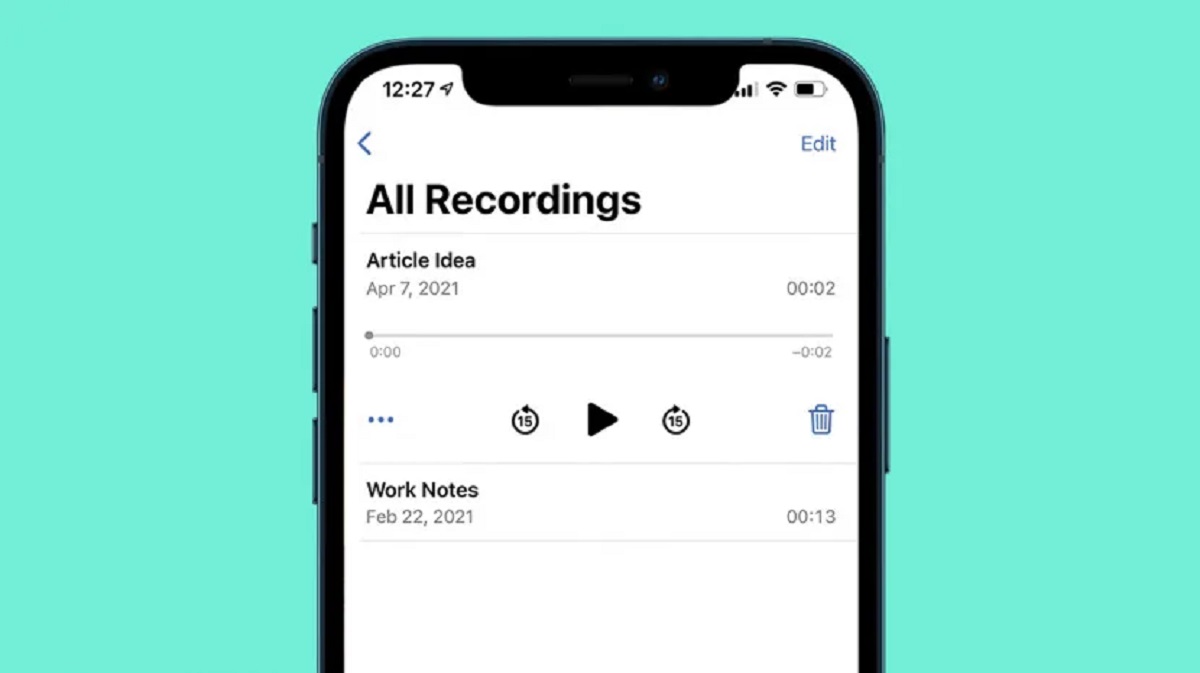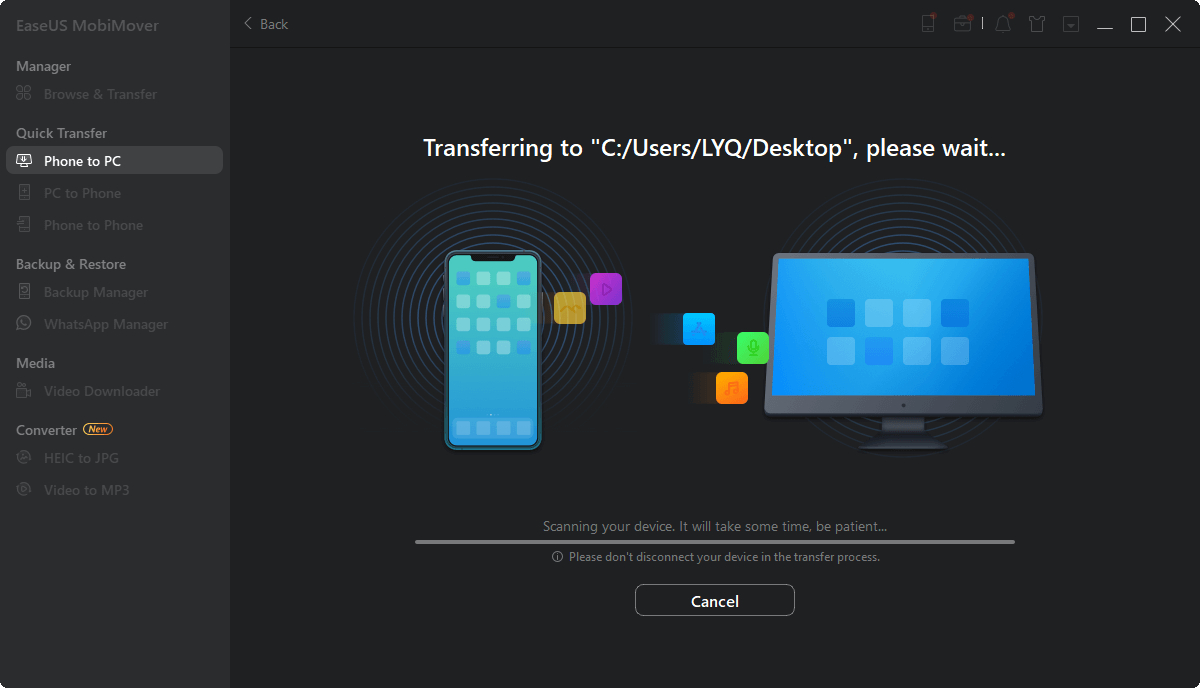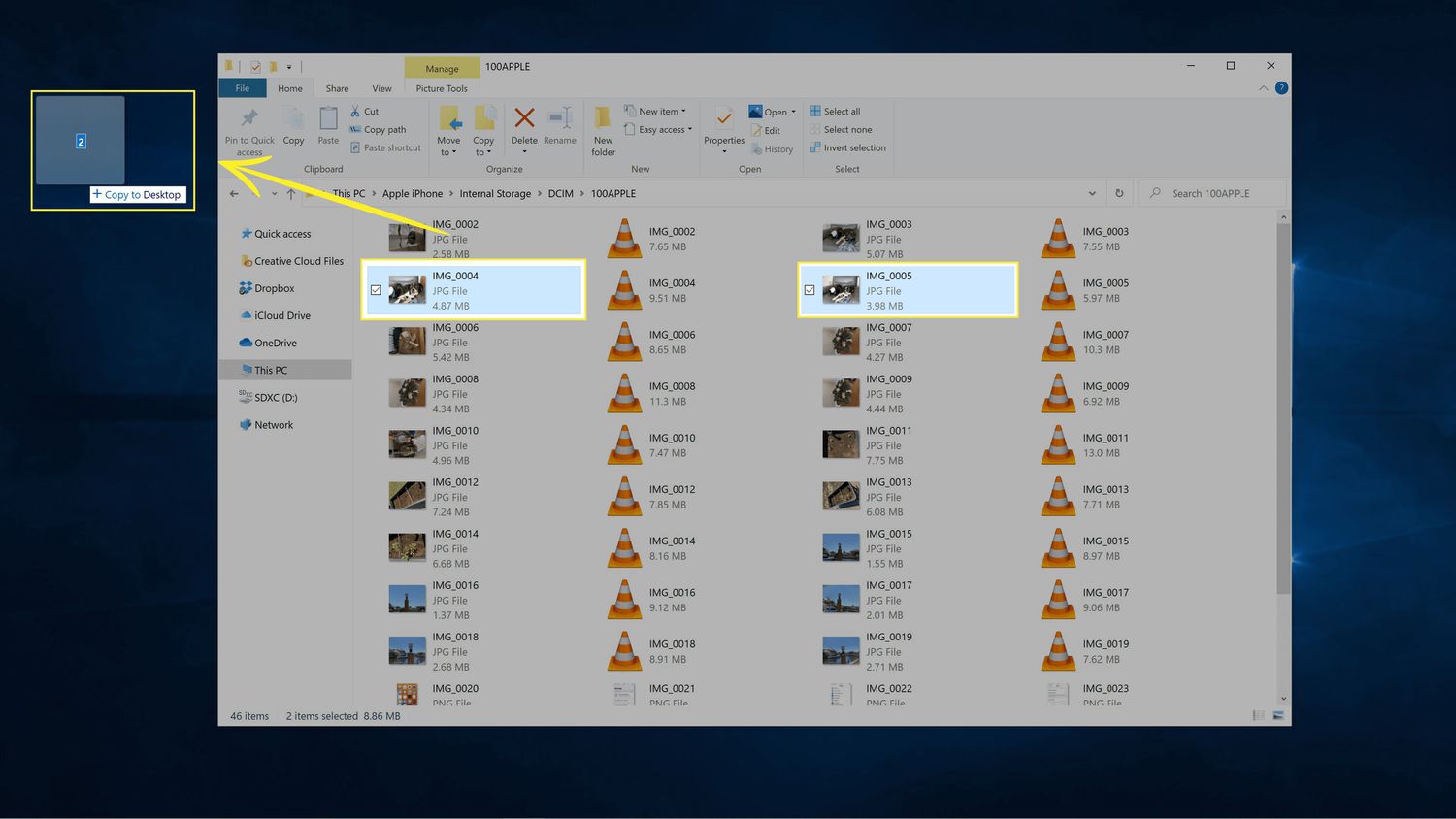Introduction
When it comes to storing and managing your messages, having a backup on your Mac can provide peace of mind and ensure that you never lose important conversations. Whether you want to keep a record of sentimental messages, need to save a conversation for legal purposes, or simply want to free up storage space on your iPhone, downloading messages from your iPhone to your Mac is a convenient and practical solution.
In this article, we will explore three different methods that you can use to download messages from your iPhone to your Mac. Each method offers its own advantages and may be more suitable depending on your preferences and requirements. You can choose the method that best suits your needs, whether it is using iCloud Messages Sync, iTunes Backup, or a third-party software.
By following any of these methods, you can ensure that your messages are securely stored on your Mac, accessible whenever you need them, and seamlessly integrated into your existing messaging apps. Whether you’re a Mac enthusiast or simply want to have a backup of your iPhone messages for any reason, read on to discover the options available to you.
It’s important to note that before proceeding with any method, you should always make sure that your iPhone is backed up to avoid any potential data loss. Additionally, ensure that your Mac is running with the latest operating system updates and that you have enough free storage space to accommodate the downloaded messages.
Method 1: Using iCloud Messages Sync
iCloud Messages Sync is a built-in feature provided by Apple that allows you to sync your messages across all your Apple devices, including your iPhone and Mac. By enabling this feature, you can access your messages from any device seamlessly. Here’s how you can use iCloud Messages Sync to download messages from your iPhone to your Mac:
- Ensure that you are signed in to the same Apple ID on both your iPhone and your Mac.
- On your iPhone, go to “Settings” and tap on your name at the top of the screen.
- Select “iCloud” and then “iCloud Drive.”
- Toggle on the “Messages” option to enable syncing your messages with iCloud.
- On your Mac, open the Messages app.
- Go to “Preferences” from the Messages menu.
- Select the “Accounts” tab.
- Make sure that your Apple ID is listed and checked, indicating that you are signed in.
- In the Messages app on your Mac, click on “Messages” in the menu bar.
- Choose “Preferences” and then click on the “iMessage” tab.
- Under “Settings,” make sure that “Enable Messages in iCloud” is checked.
Once you have completed these steps, your messages will begin syncing with iCloud, and you will be able to access them on both your iPhone and Mac. Any new messages you receive or send on your iPhone will automatically appear on your Mac.
By using iCloud Messages Sync, you can effortlessly transfer all your messages from your iPhone to your Mac without the need for any additional software or manual backups. It provides a seamless experience and ensures that your messages are always up to date across all your devices.
It is worth noting that iCloud Messages Sync requires a stable internet connection, and the process may take some time depending on the size of your message history. Additionally, ensure that you have enough iCloud storage available to accommodate your messages.
Method 2: Using iTunes Backup
If you prefer to have a local backup of your iPhone messages on your Mac, using iTunes Backup is a viable option. Here’s how you can download messages from your iPhone to your Mac using iTunes Backup:
- Connect your iPhone to your Mac using a USB cable.
- Open iTunes, and if prompted, enter your device passcode or choose “Trust This Computer” on your iPhone.
- Select your iPhone icon from the top left corner of the iTunes window.
- In the left sidebar, click on “Summary.”
- Under the “Backups” section, click on “This computer” to select it as the backup location.
- Ensure that the “Encrypt iPhone backup” option is checked if you want to include your message data in the backup.
- Click on “Back Up Now” to initiate the backup process. Wait for the backup to complete.
- Once the backup is finished, you can access your iPhone messages on your Mac by locating the backup file.
- Open the Finder on your Mac and go to the “~/Library/Application Support/MobileSync/Backup/” directory.
- Look for the backup folder that corresponds to your iPhone and open it.
- In the backup folder, navigate to “3d” -> “3d0d7e5fb2ce288813306e4d4636395e047a3d28”.
- You will find a file named “chat.db” which contains your messages.
- Copy the “chat.db” file to a desired location on your Mac to save your messages.
By following these steps, you can create a local backup of your iPhone messages using iTunes. This method allows you to have full control over your backup and access your messages even without an internet connection.
However, keep in mind that to view the messages stored in the “chat.db” file, you will need to use a third-party software such as SQLite browser to open and read the file. Additionally, iTunes backups may not include the most recent messages, depending on when the backup was last performed.
Regularly backing up your iPhone using iTunes ensures that your messages are protected and can be easily restored in case of data loss or device switch.
Method 3: Using Third-Party Software
If you’re looking for a more comprehensive and user-friendly solution to download messages from your iPhone to your Mac, using third-party software is a viable option. There are various software applications available that specialize in extracting and saving iPhone messages to your computer. Here’s how you can use third-party software to accomplish this:
- Research and choose a reputable third-party software that suits your needs. Some popular options include iMazing, AnyTrans, and PhoneView.
- Download and install the chosen software on your Mac.
- Connect your iPhone to your Mac using a USB cable.
- Launch the third-party software and follow the on-screen instructions to establish a connection with your iPhone.
- Once the connection is established, navigate to the messages section of the software.
- Select the messages or conversations you want to download and choose the desired export format.
- Specify the location on your Mac where you want to save the exported messages.
- Click on the “Export” or similar button to start the downloading process.
- Wait for the software to extract and save the selected messages to your specified location.
By utilizing third-party software, you gain more control over the extraction process and have the flexibility to export your messages in different formats, such as PDF, HTML, or plain text. These software applications often offer additional features like advanced search options, message filtering, and the ability to export attachments and media files along with the messages.
However, it’s important to keep in mind that third-party software may come at a cost, and it is crucial to choose a reputable and trustworthy application to ensure the security and privacy of your messages. Additionally, check for compatibility with your iPhone model and ensure that the software is regularly updated to support the latest iOS versions.
Using third-party software can be an efficient and convenient way to download messages from your iPhone to your Mac, offering you more flexibility and options compared to other methods.
Conclusion
Downloading messages from your iPhone to your Mac is a practical solution for various reasons, such as preserving sentimental conversations, creating backups for legal purposes, or simply freeing up storage space on your iPhone. In this article, we explored three methods you can use to achieve this: iCloud Messages Sync, iTunes Backup, and third-party software.
If you prefer a seamless and automatic syncing experience, iCloud Messages Sync is an excellent choice. By enabling this feature, your messages will be synced across all your Apple devices, including your iPhone and Mac, ensuring your messages are accessible on both devices.
For those who want a local backup stored directly on their Mac, iTunes Backup provides a reliable option. By connecting your iPhone to your Mac and initiating a backup, you can access your messages in the backup folder, allowing you to have control over your message data.
Alternatively, using third-party software offers a comprehensive solution with additional features and flexibility. These software applications allow you to extract and save messages in various formats, giving you more options for managing and exporting your messages to your Mac.
Regardless of the method you choose, it is crucial to ensure the security and privacy of your messages. Make sure to select reputable and trustworthy software if you opt for third-party solutions. Additionally, keeping regular backups and staying updated with the latest iOS versions will help protect your data.
Now that you are equipped with the knowledge of these three methods, you can confidently download messages from your iPhone to your Mac and enjoy the convenience and peace of mind that comes with having your messages securely stored on your computer.










